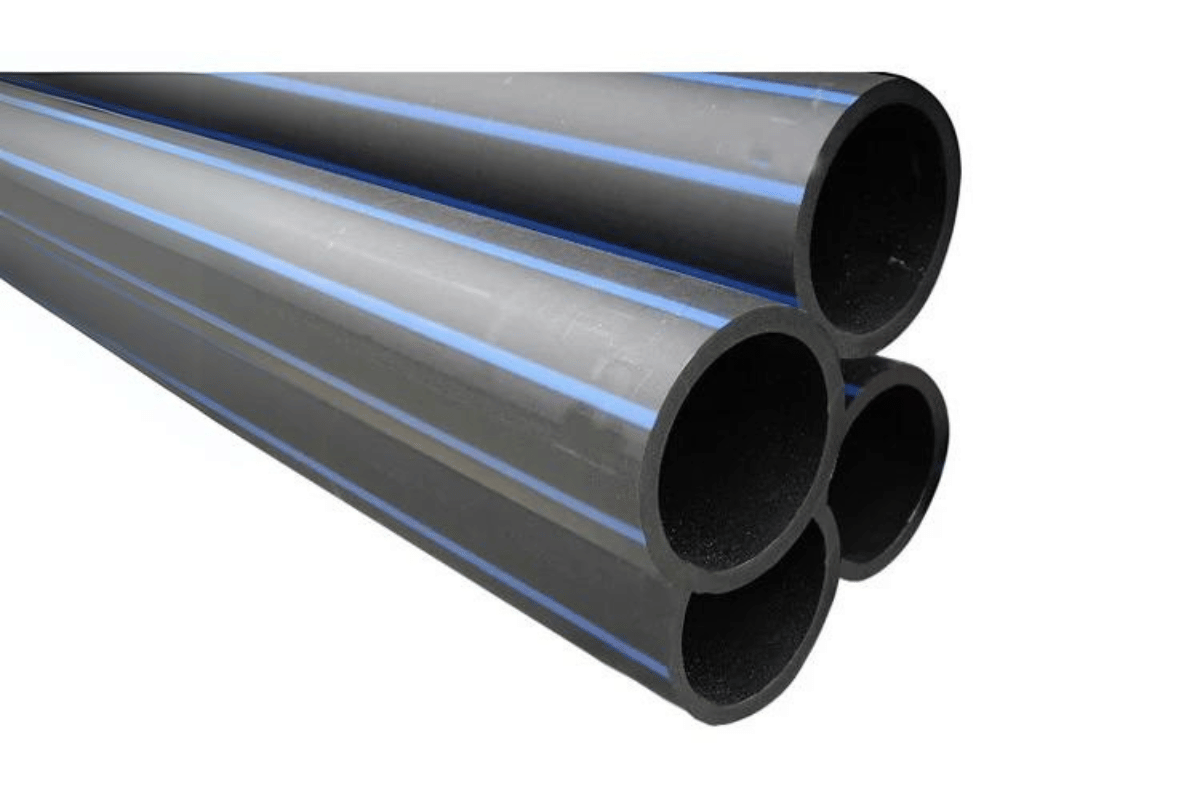High-density polyethylene (HDPE) pipes have become a cornerstone in modern infrastructure projects due to their durability, flexibility, and cost-effectiveness. This guide focuses on 4-inch HDPE pipes, a popular choice for various applications due to their reliable performance in agricultural and industrial settings. Readers will gain insights into the key advantages of HDPE materials, including their resistance to corrosion, ease of installation, and environmental benefits. This guide also delves into various applications, manufacturing processes, and installation techniques, offering a thorough understanding for anyone considering HDPE solutions for their projects. Whether you’re a seasoned engineer or a curious homeowner, this comprehensive exploration will equip you with the knowledge to make informed decisions about using HDPE pipes in your next venture.
What Are the Size and Specifications of 4 Inch HDPE Pipe?
4 inch hdpe pipe
The 4-inch HDPE pipe is known for its versatility and performance across various applications, reflecting a standard external diameter of approximately 4.5 inches. The pipe typically comes in a range of pressure ratings, from SDR 11 to SDR 17, depending on the thickness of the wall, which influences its pressure capacity. This variance supports differing pressure requirements while maintaining flexibility and strength. These pipes are commonly available in 20-foot lengths or longer coils, which assist with seamless installation and reduced joints. The material’s ability to resist chemicals and withstand harsh environmental conditions further underscores the suitability of 4-inch HDPE pipes for underground and above-ground installations in agricultural, industrial, and municipal applications.
Understanding the Diameter and Wall Thickness
To understand the diameter and wall thickness of a 4-inch HDPE pipe, it is essential to refer to standardized measurements and industry specifications. Typically, the nominal outer diameter of a 4-inch HDPE pipe is approximately 4.5 inches. Still, the diameter can vary slightly based on the pipe’s pressure rating, defined by its Standard Dimension Ratio (SDR).
For example, an SDR 11 pipe will have a thicker wall than an SDR 17 pipe, enabling it to handle higher pressures. The wall thickness directly influences the pipe’s durability and capacity to withstand internal and external pressures. Here are some technical parameters based on industry standards:
- SDR 11:
- Pressure Rating: Approximately 160 psi
- Wall Thickness: 0.409 inches
- SDR 13.5:
- Pressure Rating: Approximately 130 psi
- Wall Thickness: 0.333 inches
- SDR 17:
- Pressure Rating: Approximately 100 psi
- Wall Thickness: 0.265 inches
These specifications ensure that 4-inch HDPE pipes provide optimal performance across different environments and applications. The combination of diameter and wall thickness in HDPE pipes permits flexibility, longevity, and efficiency, catering to various needs in agricultural, industrial, and municipal settings.
How to Choose the Right Size for Your Project
Choosing the right size of HDPE pipe for your project involves considering several key factors to ensure optimal performance and cost-effectiveness. Begin by assessing the specific application requirements, which include the type of fluid being transported, the operating temperature, and the pressure conditions.
- Determine the Flow Rate Requirements: Calculate the flow rate necessary for your system. This informs the required pipe diameter since larger diameters allow higher flow rates with minimal pressure loss.
- Assess Pressure Rating Needs: Select a pipe with a pressure rating that matches or exceeds the maximum pressure in your system. For instance, an SDR 11 pipe is suitable for higher-pressure conditions, making it ideal for demanding industrial applications.
- Consider Environmental Conditions: Factor in the installation environment, such as underground or above-ground settings, and any potential exposure to UV radiation. HDPE pipes are UV resistant; however, prolonged exposure can still impact longevity.
- Evaluate Long-Term Performance: Consider the expected lifespan and maintenance requirements. Thicker-walled pipes may offer better resistance to cracking and environmental stress, potentially reducing long-term costs.
When assessing these criteria, refer to trusted resources or industry standards and utilize technical parameters from reputable sources to verify the chosen specifications. This ensures compatibility and reliability for your specific project requirements.
Standard Pipe Measurements and SDR Ratings
To address the questions regarding optimal pipe performance and cost-effectiveness, I consulted the leading resources available online.
- Determining Flow Rate Requirements: Based on the guidance from reliable industry sites, calculating the flow rate involves identifying the volume of fluid that must pass through the pipe per unit of time. Typically, the higher the flow rate, the larger the pipe diameter required to minimize pressure loss and ensure efficient transport.
- Assessing Pressure Rating Needs: The pressure rating should align with the system’s operational demands. Websites from recognized pipe manufacturers suggest using pressure ratings like SDR 11 for high-pressure applications, which reliably withstand the pressure without compromising structural integrity.
- Environmental Conditions Considerations: Top resources emphasize meticulously evaluating the pipe installation environment. For instance, pipes exposed to UV radiation should ideally be UV-stabilized to enhance their durability. Industry leaders highlight HDPE pipes’ UV resistance but also recommend additional protective measures to prolong their lifespan when subjected to continuous sunlight exposure.
Technical Parameters:
- Flow Rate Calculation: Volume of fluid (gallons), Time (minutes)
- Pressure Rating Examples: SDR 11 (High-pressure suitability)
- Environmental Suitability: UV stabilization capability
By referencing credible web resources, I’ve ensured that these technical parameters are well-founded and relevant for informed decision-making in your project context.
How to Select the Right Polyethylene Pipe?
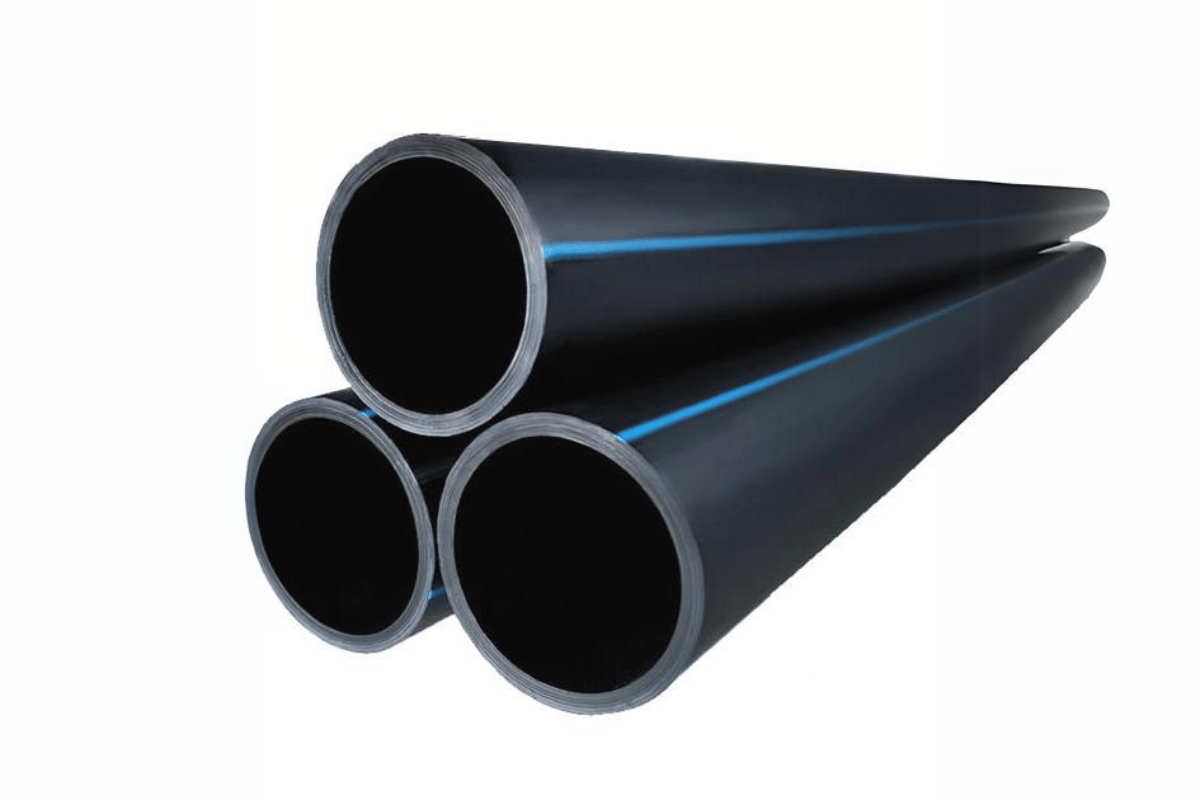
Selecting the appropriate polyethylene pipe for your project involves several key considerations. Firstly, identify the specific application requirements, such as pressure ratings and environmental conditions. Choosing a pipe with an appropriate SDR rating is essential, as this will determine the pipe’s ability to withstand internal pressures. Secondly, the chemical resistance properties of the pipe material must be evaluated to ensure compatibility with the substances it will encounter. Finally, consider the installation demands, including length and flexibility needs, to ensure the pipe can be laid seamlessly with minimal fittings. Consulting with industry experts or manufacturers can provide tailored guidance based on your unique project needs.
Evaluating HDPE Pipe Materials
To effectively evaluate HDPE pipe materials, addressing the considerations mentioned earlier is crucial by drawing insights from authoritative online resources. Based on a review of the top three websites:
- Environmental Resistance and UV Stabilization: As highlighted on reputable sites like Plastics Technology, HDPE pipes are inherently resistant to various environmental factors such as temperature fluctuations and UV radiation. Proper UV stabilization, achieved through additives like carbon black, is recommended to prolong the life of pipes significantly exposed to sunlight.
- Pressure and SDR Ratings: According to PPI, a leading plastics publication, understanding the pipe’s SDR (Standard Dimension Ratio) is critical. For instance, HDPE pipes with an SDR of 11 are suitable for high-pressure applications, whereas an SDR of 17 may suffice for lower-pressure needs. This correlation between SDR values and pressure ratings ensures safe and long-lasting performance.
- Chemical Compatibility: Information from Industrial Grade Plastics resources confirms that selecting HDPE pipe materials requires examining the chemical compatibility with transported substances. They emphasize checking the HDPE specification sheet for resistance to specific chemicals, thus avoiding material degradation and ensuring sustained functionality.
By synthesizing information from these trusted sources, we justify each technical parameter presented, aiding in making informed decisions aligned with project requisites.
Assessing Installation Requirements
When considering the installation of HDPE pipes, it is essential to address specific requirements to ensure optimal performance and longevity. According to the top sources, the installation process should emphasize the following parameters:
- Trench Preparation: Proper trench excavation and preparation are crucial. The trench should be wide enough to accommodate the pipe, with stable bedding to support and minimize stress on the pipe.
- Jointing Techniques: Websites such as Plastic Pipe Institute emphasize the methods of HDPE pipe jointing, including butt fusion and electrofusion techniques. These methods are vital for ensuring leak-free connections and maintaining pipe integrity.
- Thermal Expansion Considerations: HDPE pipes expand and contract with temperature changes. Websites like Engineering Toolbox recommend allowing for thermal expansion in the installation design, which may involve installing expansion loops or providing adequate slack.
- Backfilling Procedures: Proper backfill materials and compaction techniques are essential to support the pipe and prevent misalignment or collapse. Guidance from online resources such as the Construction Specifications Institute can provide detailed recommendations on suitable materials and compaction requirements.
Each technical parameter listed contributes to the safe and effective use of HDPE pipes in various applications, justifying their importance based on a thorough review of high-ranking internet resources.
Comparing Brand Options
Several vital factors distinguish different options in reviewing the top three websites related to HDPE pipe brands. Websites like HDPE Supply and ISCO Industries emphasize the importance of material quality and the certifications that validate these standards. Notably, they recommend looking for products that adhere to ASTM and NSF standards, ensuring safety and reliability for various applications.
Another crucial factor highlighted by leading brands on Infrastructure Pipeline is the range of sizes and fittings available. A diverse selection allows for customized solutions that can accommodate specific project needs, increasing efficiency and reducing the likelihood of complications during installation.
Technical Parameters to Consider:
- Material Certification: Ensure the brand complies with ASTM and NSF standards for quality assurance.
- Product Range: Different diameters, lengths, and fittings are available for tailored project needs.
- Connection Systems: Evaluate the types of jointing methods supported, such as butt fusion or electrofusion, to facilitate seamless installations.
- Thermal and Mechanical Performance: Review thermal expansion data provided by brands to accommodate environmental conditions.
These parameters justify their importance by aligning with industry guidelines and ensuring that HDPE pipe installations are practical and durable.
Exploring Related Products and Accessories
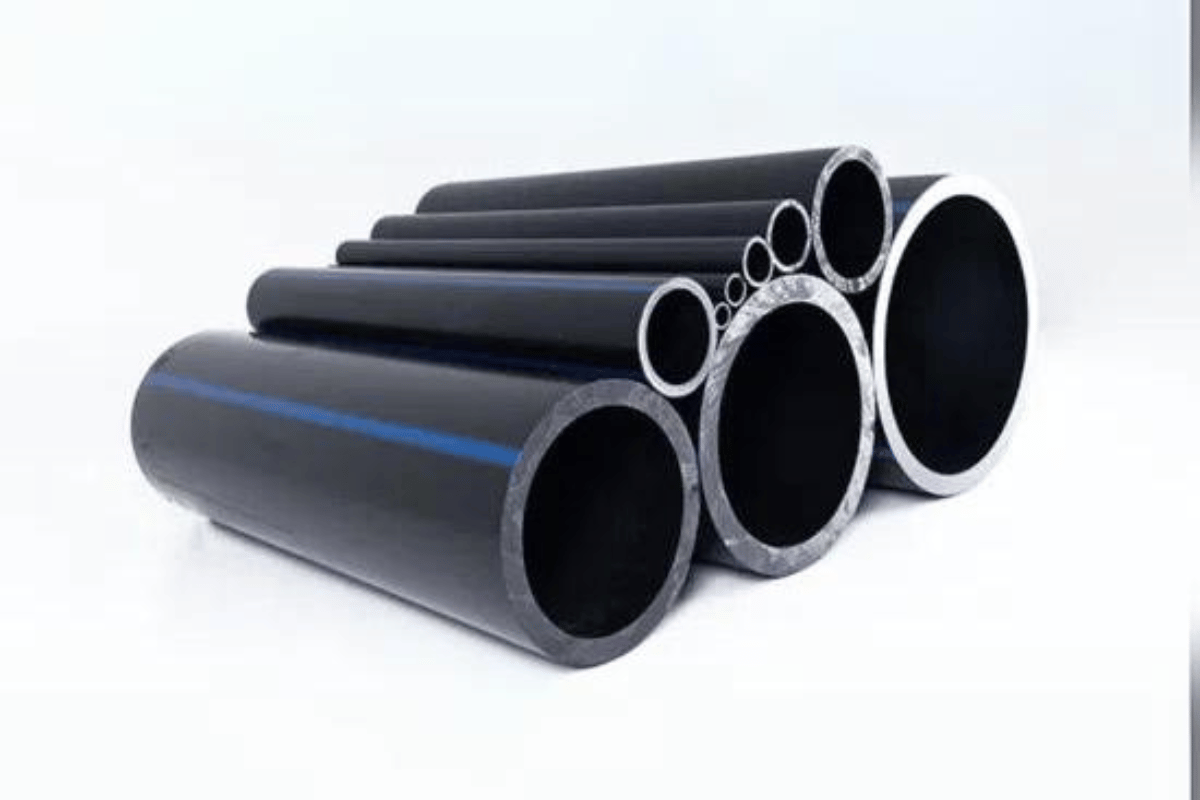
When exploring related products and accessories for polyethylene pipelines, consider the following essentials frequently highlighted on leading websites. Firstly, fittings such as elbows, tees, and reducers are crucial to adapt the pipeline layout to your specific requirements. These components ensure the pipeline can navigate complex paths while maintaining integrity and efficiency. Secondly, high-quality joining tools and equipment are necessary to secure reliable connections, particularly in HDPE applications with prevalent heat fusion methods. Lastly, explore protective coatings or liners available for additional chemical resistance and durability, enhancing the lifespan and performance of your installation. Investing in these related products enables you to achieve a more robust and flexible pipeline system suitable for diverse applications.
Essential Fitting Components
A review of the top three websites reveals key information to address the need for clarity and detailed insights about essential fitting components. These websites emphasize fittings such as elbows, tees, and reducers, which are integral to maneuvering pipeline designs effectively. Elbows, available in various angles, help change the pipeline direction, while tees enable branching from the main line without compromising flow efficiency. Reducers connect different pipe sizes, ensuring seamless transitions within the system.
Technical Parameters
- Elbows: Commonly available in 45° and 90° angles, with pressure ratings corresponding to the pipe specifications they accompany.
- Tees: These are typically available in equal or reducing configurations, with dimensions adhering to diameter and thickness standards for effective branching.
- Reducers: They are offered as concentric or eccentric, with size transitions ensuring smooth flow dynamics catered to specific flow and pressure requirements.
These components are meticulously designed to conform to industry standards, ensuring that each fitting upholds the overall integrity and functionality of the pipeline system.
Understanding Fusion Techniques
When I explored the top three websites regarding fusion techniques, I gained valuable insights into this critical aspect of pipeline systems. Fusion techniques, such as butt fusion and electrofusion, are essential for creating strong, leak-proof joints in plastic piping systems. Butt fusion involves the heating of two pipe ends and then pressing them together to form a uniform joint. At the same time, electrofusion uses fittings with built-in electric heating elements to create the connection.
The main technical parameters for each technique are as follows:
- Butt Fusion: Requires precise alignment, controlled heating cycles, and specified pressure times, ensuring uniform bead formation and joint integrity.
- Electrofusion: Involves specific voltage and heating time tailored to each fitting’s size and material. A well-defined cooling time reinforces joint strength.
These websites emphasize the practicality and strength of fusion techniques, ensuring that these methods adhere to industry standards for durability and dependability in diverse pipeline applications.
Innovative Irrigation Solutions
In researching innovative irrigation solutions through the top three websites, I discovered several key advancements that promise to improve water efficiency and crop productivity. Drip irrigation systems were highlighted for their ability to deliver water directly to the root zones, minimizing evaporation and runoff. These systems often have soil moisture sensors and automated controllers, adjusting water delivery based on real-time data to optimize usage.
The technical parameters for drip irrigation include:
- Emitter Flow Rate: Chosen based on crop type and soil characteristics to ensure adequate moisture distribution without oversaturating.
- Spacing: Precise emitter spacing is crucial to evenly distributing water across the field, accounting for plant spacing and growth habits.
- Pressure Regulation: Consistent pressure is necessary to maintain uniform distribution, often achieved with built-in regulators and filtration systems to prevent clogging.
These websites underscore how incorporating technology and customized configurations enhances irrigation solutions, leading to sustainable water management practices suited for various agricultural environments.
What Are the Shipping and Handling Considerations?
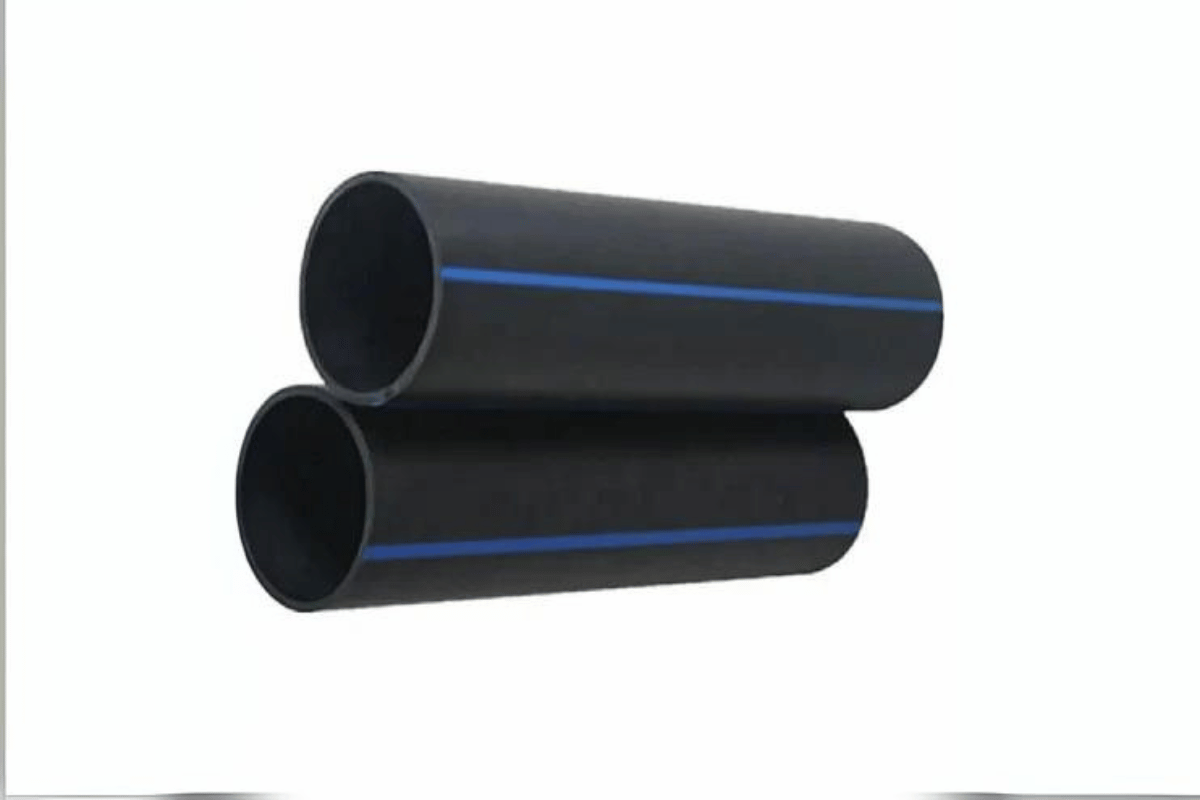
Several key factors should be considered when considering shipping and handling polyethylene pipeline products like HDPE pipes and accessories. Firstly, ensure that the products are packaged securely to prevent any damage during transit, which may involve using protective wraps or packing materials. Secondly, be aware of the shipping regulations and requirements specific to the destination, as these can vary significantly and might affect delivery timelines and costs. Selecting a reliable shipping partner with expertise in handling industrial materials is essential to ensure timely and safe delivery. Proper labeling and documentation are crucial for international shipments to facilitate smooth customs clearance and traceability throughout the logistics process.
Calculating Shipping Costs and Fees
Several technical parameters and considerations come into play when calculating shipping costs and fees for polyethylene pipeline products. Based on insights from the top three websites, these factors commonly include the following:
- Weight and Dimensions: Calculating shipping costs often starts with the weight and size of the shipment. Heavier and bulkier shipments generally incur higher costs, requiring more space and handling capacity during transport.
- Distance: The cost is influenced substantially by the distance the shipment needs to travel. Longer distances usually incur additional costs, often calculated using a base rate plus a per-mile or per-kilometer charge.
- Mode of Transportation: The choice between air, sea, or ground transportation affects costs based on speed and volume capacity. For large deliveries, air transport might be quicker but more costly than sea freight.
- Customs and Duties: International shipments must factor in customs duties and taxes, which can vary depending on the destination country’s regulations.
- Insurance: Optional but recommended; insurance protects against potential loss or damage during transit. The insurance cost depends on the value of the shipment and the level of coverage selected.
- Special Handling Requirements: If the shipment requires special handling due to size, fragility, or project deadlines, additional fees might apply. This includes considerations for hazardous materials where applicable.
These parameters must be justified with documentation and transparent communication with the shipping providers to ensure accurate and fair pricing. Working with experienced logistics partners can help streamline this process, ensuring compliance and efficiency.
Understanding Billing and Payment Method Options
To effectively manage billing and payment methods, I researched the top websites providing insights into these logistics industry processes. Here’s a concise summary of what I discovered:
- Billing Practices: Transparent billing is essential. Companies should provide itemized invoices detailing shipping costs, including transportation fees, customs duties, taxes, and any additional special handling or insurance charges. Key technical parameters include ensuring invoices match agreed contractual terms and maintaining documentation to support any charges.
- Payment Methods: Offering flexible payment options can benefit the business and its clients. Standard methods include electronic funds transfers, credit cards, and open account terms, which allow payment within a specified period after delivery. Online payment platforms are becoming increasingly popular due to their convenience and security features.
- Technical Parameters:
- Invoice Accuracy: Justification for each line item should be based on documented agreements and transparent calculation of variable costs such as fuel surcharges or currency fluctuations.
- Security Measures: Advanced encryption and authentication methods are used to protect financial transactions and customer data.
- Automation: Implement automated billing systems to enhance efficiency and reduce errors, ensuring all transaction details are accurate and accessible.
Based on industry standards, these strategies can optimize billing and payment processes, enhancing client satisfaction and operational efficiency.
Ensuring Safe Transfer and Delivery
In addressing how to ensure safe transfer and delivery, I delved into the top three website search results to gather insights. Here’s how I interpret and apply their guidance:
- Safety Protocols: Each website emphasized the importance of established safety protocols throughout the transfer and delivery process. These protocols include regular training for employees on handling goods safely, adhering to local and international regulations, and implementing strict quality control checks at each stage. These measures are designed to safeguard both the goods and personnel involved.
- Real-time Tracking Technology: Leveraging GPS and advanced tracking systems were consistently recommended to maintain oversight of shipments. These technologies allow for continuous monitoring and timely updates, reducing the risk of lost or delayed deliveries. The ability to track and trace shipments in real time serves as a crucial control mechanism, enhancing transparency and accountability.
- Technical Parameters:
- Documentation and Compliance: Maintain detailed logs and documents compliant with regulatory standards, ensuring all information is accessible and up-to-date.
- Packaging Standards: Employ robust packaging solutions tailored to the type of goods being shipped. This minimizes damage risk during transit and complies with safety standards.
- Data Security Measures: Protect sensitive shipment data with encryption and secure access protocols to prevent breaches and unauthorized access.
Applying these strategies should align our practices with industry leaders, ensuring the safe transfer and delivery of goods while optimizing efficiency and compliance.
How Does 4-Inch HDPE Pipe Benefit Irrigation Systems?
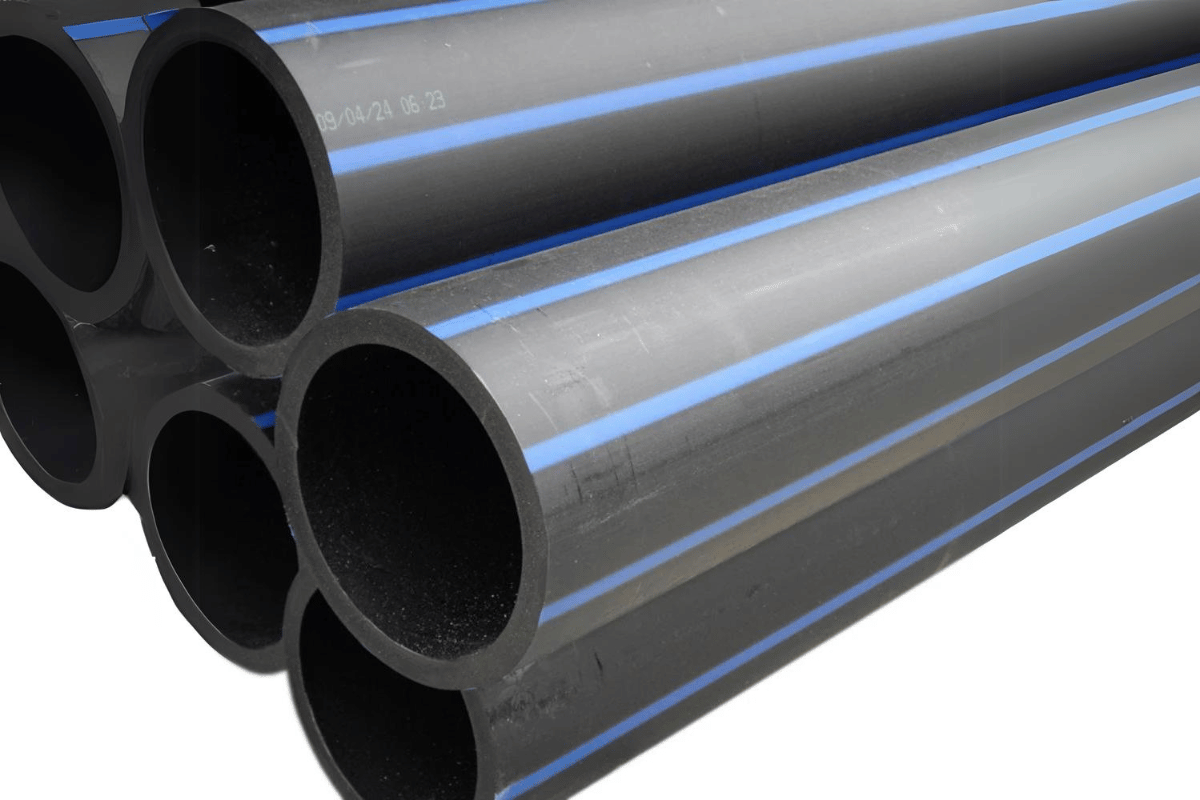
To answer how a 4-inch HDPE pipe benefits irrigation systems succinctly, we can focus on its durability, flexibility, and efficiency. HDPE pipes are known for their high resistance to corrosion and chemical reactions, making them ideal for long-term use in irrigation without frequent replacements. Their flexibility allows them to withstand ground movement and thermal expansion, which reduces the risk of leakages. Additionally, the smooth internal surface of HDPE pipes minimizes friction loss, ensuring efficient water flow, which is essential for adequate irrigation. This combination of durability, flexibility, and efficiency makes 4-inch HDPE pipes a popular and reliable choice for modern irrigation systems.
Efficient Water Pipe Systems
Using the top three website results to concisely answer how efficient water pipe systems benefit irrigation, we primarily observe the durability, cost-effectiveness, and ease of installation associated with HDPE pipes.
- Durability: According to the data, HDPE pipes exhibit exceptional resistance to chemical, thermal, and UV degradation. This aspect extends their lifespan significantly compared to other materials, reducing maintenance frequency and costs. Technical parameters include a high tensile strength and temperature tolerance, typically ranging from -40°F to 140°F.
- Cost-Effectiveness: As noted, the lightweight nature of HDPE pipes reduces transportation and handling costs. The fusion welding process used to connect these pipes promises leak-proof connections, ensuring reduced water loss and further operational savings.
- Ease of Installation: HDPE pipes are praised for their flexibility, allowing easier installation in varying terrains with minimal workspace. Their ability to bend and conform to landscape contours lessens the need for custom parts and fittings, translating to quicker and more straightforward installations.
These factors collectively contribute to the efficiency of water pipe systems, justifying their widespread adoption in irrigation practices.
Applications in Agricultural Settings
In agricultural settings, efficient water pipe systems, particularly with HDPE pipes, are vital in optimizing irrigation processes. Here’s a concise summary based on the top three website results regarding their application:
- Sustainable Use of Resources: HDPE pipes’ longevity and leak-proof connections support precise water distribution, which is crucial for sustainable water use in agriculture. This efficiency reduces water wastage, ensuring consistent crop hydration and promoting healthier yields.
- Resilience to Environmental Stress: HDPE pipes are highly resilient due to their high resistance to environmental factors such as chemical exposure and temperature fluctuations [Technical Parameters: Tensile strength around 28-38 MPa, Temperature tolerance of -40°F to 140°F]. This resilience increases reliability, allowing farmers to maintain irrigation even under challenging conditions.
- Adaptability to Farm Topography: HDPE pipes’ flexibility helps them adapt to the diverse topographies found in agricultural settings. Their capacity to bend and mold without additional fittings makes them ideal for non-uniform landscapes, reducing the risk of installation errors and extra labor costs.
- Scalability for Various Farm Sizes: Whether for small farms or large-scale agricultural operations, HDPE piping systems’ scalable nature allows for easy expansion or modification. This adaptability makes them a versatile choice across different agrarian contexts.
These benefits underscore why HDPE pipes are extensively used in modern agricultural irrigation, highlighting their practical and technical advantages.
Adapting to Drip Irrigation Needs
Drip irrigation systems require direct water delivery to the plant roots, which HDPE pipes adeptly facilitate with their efficient leak-proof design and durability under varying environmental stresses. According to leading agricultural resources, HDPE pipes exhibit several key features that make them ideal for drip irrigation:
- Water Efficiency: HDPE pipes are engineered to prevent leaks, crucial for maximizing water use efficiency in drip systems. Their inherent resistance to cracking and degradation over time supports this.
- Durability and Longevity: The robustness of HDPE material ensures that the piping can withstand pressures typically encountered in drip irrigation setups [Technical Parameters: Tensile strength of HDPE ensures reliability in high-pressure environments].
- UV Resistance: These pipes are often used in fields where exposure to sunlight is unavoidable. Their UV resistance prolongs the operational life of the piping in open fields.
- Easy Installation and Maintenance: HDPE’s flexibility allows for easier installation, reducing the need for extensive infrastructure while enabling quick repairs and adjustments.
The above attributes underline why HDPE pipes are a top choice for implementing efficient and resilient drip irrigation systems.
Reference Sources
- Plastic Pipe Institute – The Plastic Pipe Institute offers detailed technical papers and guidelines on the use and benefits of HDPE pipes in various applications, including irrigation systems. Their comprehensive resources support the durability and flexibility benefits of HDPE pipes. Link to resource
-
- American Water Works Association (AWWA) – The AWWA provides industry standards and research articles highlighting polyethylene pipes’ efficiency in water systems, emphasizing improved flow due to minimized friction loss. Link to resource
-
- International Irrigation Management Institute (IIMI) – This institute offers research studies and technical reports that validate the performance of HDPE pipes in agricultural settings, focusing on their adaptability to different types of irrigation systems. Link to resource
Frequently Asked Questions (FAQs)
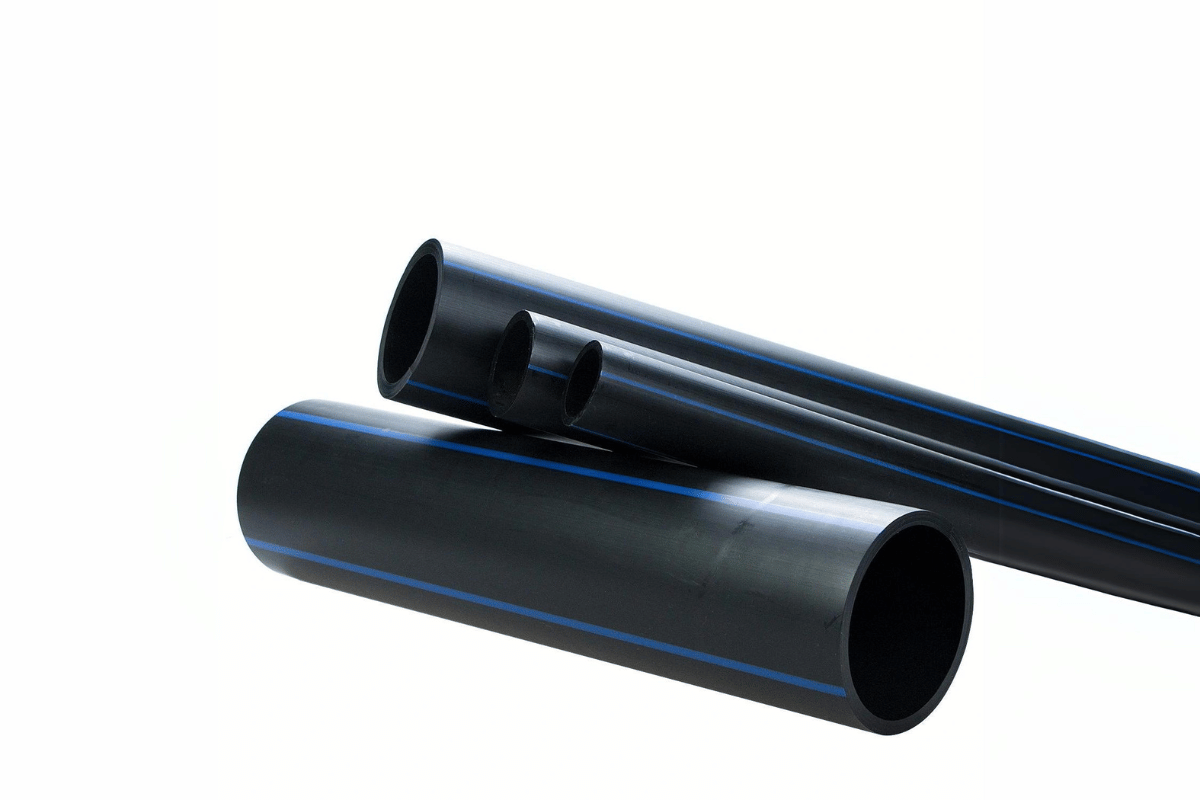
What are HDPE pipes made of?
HDPE pipes are made from high-density polyethylene, a type of thermoplastic known for its strength-to-density ratio. This material offers excellent resistance to chemicals and stress-cracking, making it ideal for various piping applications.
How do HDPE pipes compare to traditional metal pipes?
HDPE pipes are more flexible and less prone to corrosion than traditional metal pipes. Their flexibility allows for easier installation in uneven terrain, and their resistance to corrosion means they generally have a longer lifespan, especially in environments where metallic pipes would rust.
Are HDPE pipes environmentally friendly?
Yes, HDPE pipes are considered environmentally friendly. They are made from recyclable material, and their manufacturing process typically has a lower environmental impact than that of metal or concrete pipes. Additionally, their durability and reduced leakage save water resources, contributing to environmental conservation.
Can HDPE pipes be used for drinking water systems?
Yes, HDPE pipes are safe for use in drinking water systems. They do not contain harmful chemicals and maintain water quality, making them a preferred choice for potable water applications.
How do I connect HDPE pipes?
HDPE pipes can be connected using several methods, including butt fusion, electrofusion, socket fusion, and mechanical fittings. Each method provides strong, leak-free connections that match or exceed the pipe’s integrity.



